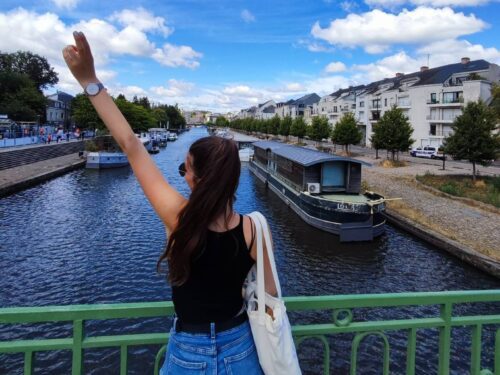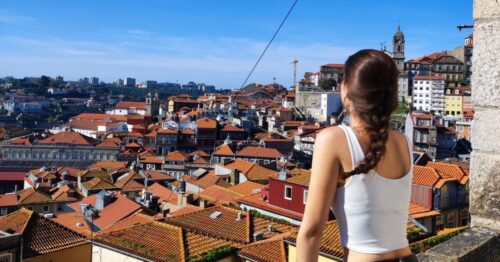Backpacking Europe in Winter: Is it a Good Idea? (2024)
Are you considering a backpacking trip through Europe in the winter? Backpacking Europe in winter is actually a fantastic idea!
European summer aesthetic has a cult following on social media. So you might wonder if it is worth visiting Europe in the winter and if you can even travel to Europe in winter.
Short answer – yes!
But what to expect when traveling Europe in winter?
I’ve lived all my life in Europe, and I’ve traveled around in every season. Trust me, there are advantages and disadvantages to all of them!
Generally, summer is a high season in Europe. Yet, European destinations thrive in the winter and should be on your European winter bucket list.
Let’s get started with your winter backpacking Europe guide!
Disclaimer: This post may contain affiliate links, which means I may receive a commission, at no extra cost to you, if you make a purchase through a link. I hope you find the information here helpful!

Disadvantages of backpacking Europe in winter
I will be realistic with you and start with the cons of backpacking Europe in winter.
Yes, there are some challenges that you might face, so it is best to prepare for them before making a final decision and booking that ticket.
1. Winter weather in Europe is cold and rainy
The climate of Europe is the biggest disadvantage of backpacking Europe in winter. We can’t ignore the fact that the weather in Europe in winter is not ideal – to say the least.
How cold does Europe get in winter? It gets pretty chilly.
The temperatures in the north of Europe are around 0℃, while it is about 10℃ in the South.
Regardless of where in Europe you are, days are short, and the weather is rainy, grey, and gloomy.
It’s hard to decide where is the best place to start backpacking Europe in winter.
Northern Europe is notorious for short winter days, and you might not see any sun during your entire trip.
Think of climbing a great viewpoint just to see fog everywhere you look. Yes, it can be very disappointing.
On the other hand, the South of Europe is not nearly as bad! However, swimming in the sea is not an option, and summer parties in Europe are long gone.
The weather is significantly colder than in the summer, but it is a perfect temperature for sightseeing. Sunny winter days are the best!
2. Some famous tourist areas are empty
Empty tourist attractions can be an advantage or disadvantage, depending on how you view them.
On the one hand, you get the place all to yourself. On the other hand, the atmosphere is just not quite there.
For example, Croatian islands are deserted in winter. I can only assume that backpacking Cyclades in the winter is similar.
What is a lively, picturesque fishing village in the summer becomes a ghost town in the winter. If you manage to sort out transportation and accommodation in the first place!
At the same time, exploring Dubrovnik without crowds is a dream come true!
Backpacking around Andalucia in winter can be fantastic as you can see famous orange trees and not overheat in 40℃ weather.
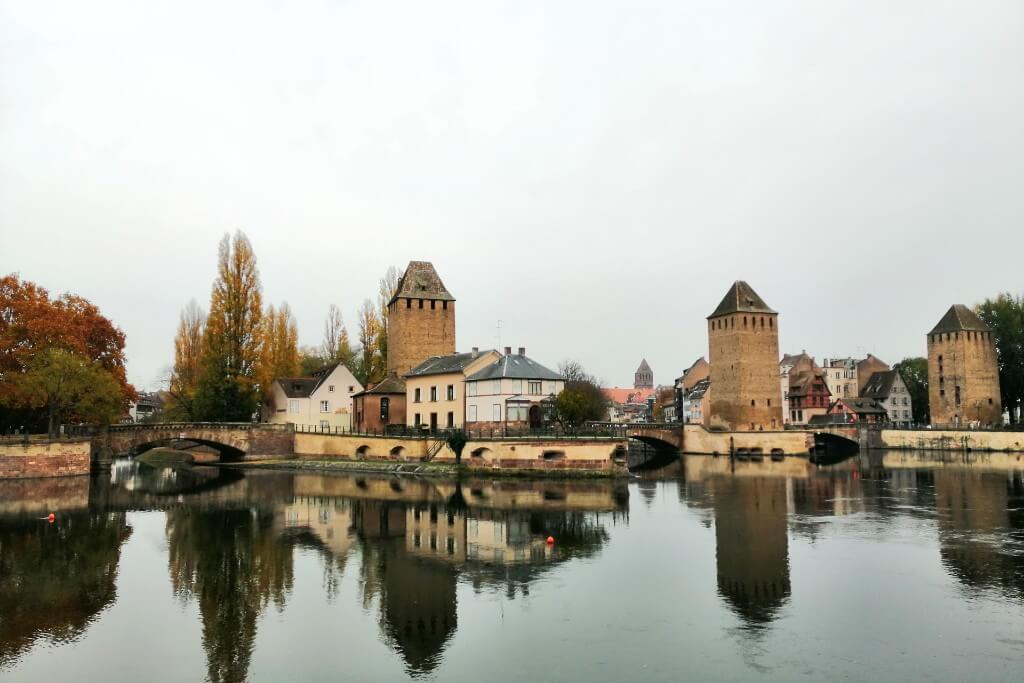
3. Some activities and places might be closed
Following on the previous point, as the seasons change, so does the availability of tourist activities and tours.
Tourist attractions return to their winter opening hours which tend to be shorter than their summer ones. Some might even fully close for the season!
On a summer day in Zadar, you can walk to the port and book a tour of Kornati National Park for the same day. In winter, the port is empty!
The only way to get an excursion is to book in advance online or through an agency once you’re in the city. Even then, they might only go forward with your booking if other people join too.
To avoid disappointment, check the working hours of places you’re interested in visiting before traveling.
However, this mainly affects coastal locations that focus on summer tourism. You won’t have the same issue with tourist attractions in big cities.
4. Different schedules for some transport
Some places will be harder to reach in the winter—especially tourist attractions in predominantly summer locations.
Ferries don’t run nearly as frequently in the winter as in summer.
Tourist buses and shuttles connecting mainly tourist accommodation areas with the city center will discontinue their services until next summer.
I want to stress that you don’t have to worry about transportation if you visit big cities and towns where people live and work.
Trains and buses run regularly as locals still need to live their lives. Moreover, local transportation frequency might increase during the “school year”.
5. Your travel plans might have to change along the way
You wanted to visit Zagreb, but you find out that the city got snowed in and the local transportation does not run – yes, it happens. I can only imagine how problematic it can be for actually remote locations.
Unless you want to spend time relaxing in a hostel room, you might want to skip visiting until the situation improves.
The best advice to avoid weather-related expenses is to not book too far in advance or check that your accommodation has a free cancellation policy.
You might want to fly longer distances rather than a bus.
I look for flights on Skyscanner. I love their “everywhere” option for a destination so you can choose the cheapest place to fly to!
6. It is harder to pack light
It is harder to pack light because you need to take your winter coat, boots, jumpers… Winter clothes are generally bulkier and take up more space.
I love to pack in a personal item only to avoid luggage fees. However, it might be impossible to do so for a long winter trip.
As a backpacker, you have to carry all of your luggage. It can be inconvenient as a solo female traveler when you struggle with your bags.
You see, nothing major is stopping you from backpacking Europe in winter! All of these drawbacks are easily avoidable with a little bit of planning.

Advantages of backpacking Europe in winter
I’ve told you that backpacking in Europe in winter is a great idea, so let’s move on to the pros of winter in Europe.
1. Everything is cheaper!
Generally, it is more affordable to backpack in Europe in winter than in summer.
Flight prices go down significantly, and so do train and bus tickets. You can find many low-budget airline flights for around 20€!
It comes in handy when you have to pay for your carry-on because it is hard to pack for winter in a personal item-sized bag. (But not impossible! I did it for a week-long trip many times!)
High-season accommodation prices drop significantly. Accommodation in popular areas is often half the price!
Restaurants bring back deals that they discontinued during the summer months. Similarly, museums offer free visit days again.
Tour companies are willing to negotiate lower prices as there are fewer tourists.
December is an exception to this rule. The holiday season can be pricey if you visit a Christmas Market destination, such as Strasbourg or Colmar.
2. Tourist attractions are less crowded
You can’t overlook this advantage. It is the most significant benefit of traveling in the low season after the cost.
You will not wait in long lines or book weeks in advance to visit most European tourist attractions in winter. Neither will you have to push through people to see the sights you came to see.
Spontaneous trips to a location your new hostel friends told you about are an option again!
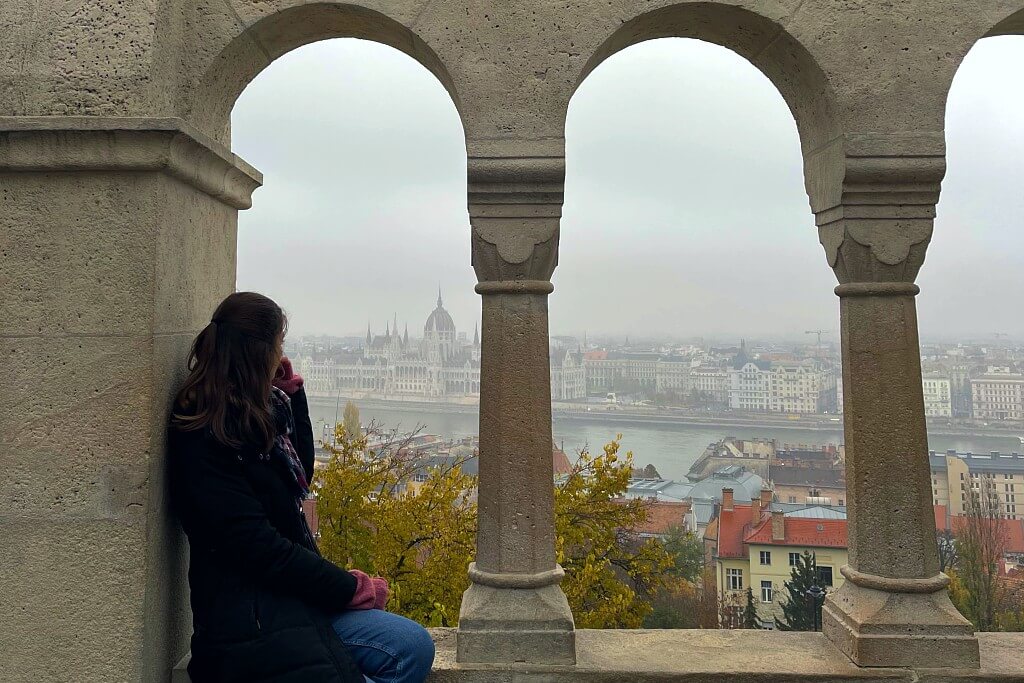
3. You can be spontaneous
Being spontaneous is a luxury you don’t have when you visit Europe in summer.
During high season, you have to book your transportation months in advance to get the best prices, the best-rated hostels are always fully booked, and so are the tourist attractions.
Traveling in the low season allows you to go with the flow.
December in Christmas Market destinations and New Year’s Eve are an exception to this rule!
4. The weather is no longer scorching
If you visited Europe in July or August, you know how hot it can be. This summer was extremely hot, with temperatures hitting 40℃ multiple days in a row.
Sightseeing is the last thing I want to do when the temperature is 40℃.
I don’t even want to be on the beach because I will be sunburnt within half an hour. Especially on the Atlantic Ocean beaches around Bordeaux, where there is no natural shade at all!
Winters might be cold, but it is easier to put on more layers than to cool down when there is nothing left to take off!
Also, you can choose to take a coastal route, such as backpacking the Algarve coast in Portugal, where the winter temperatures are pleasant!
5. Winter-specific activities
Some European experiences you can only have in winter!
Christmas Markets are a star event of December in Europe.
New Year’s Eve is another major event in Europe. Not even freezing temperatures can stop Europeans from partying with live concerts on the main squares.
- Check out the Best Places For New Year’s in Europe for solo travelers and backpackers!
If skiing is your sport of choice, you have plenty of European resorts for every budget!
Is seeing the Northern Lights on your bucket list? Winter is the time to do it!

6. Picturesque towns and villages
Winter in Europe includes medieval castles, narrow cobblestone streets, and historic houses decorated for Christmas or under a light snow blanket.
Colourful houses braving the grey foggy mornings. Can you think of anything more quintessentially European?
7. Join the locals in their everyday activities
Students are back in school, adults are going to work, and life is back to normal in Europe.
If you are slowly traveling through Europe, you get an incredible opportunity to live like locals.
Find popular local cafes to warm up after exploring the city or join social activities in your hostel.
Traveling in winter can feel less like traveling as you don’t see many tourists around. Locals are friendlier, and you can get a real sense of the local life.
Best Backpacking Routes in Europe in Winter
You will need an excellent winter in Europe itinerary to make the most of your backpacking trip. Your route will depend on what you want to see and how much time you have to travel.
Here are some recommendations for winter backpacking routes to hit all the best places to backpack in the winter.
Eastern Europe itinerary
Easter Europe is the perfect late autumn and early winter backpacking destination. Foggy weather just adds to the charm of Eastern Europe.
Think spooky atmosphere of castles in Transylvania, Romania.
Start your trip in Bulgaria and travel upwards through Romania. Continue to Serbia, Croatia, and Hungary.
Eastern European cuisine is perfect for cold weather! Traditional soups and stews are staples of the winter diet.
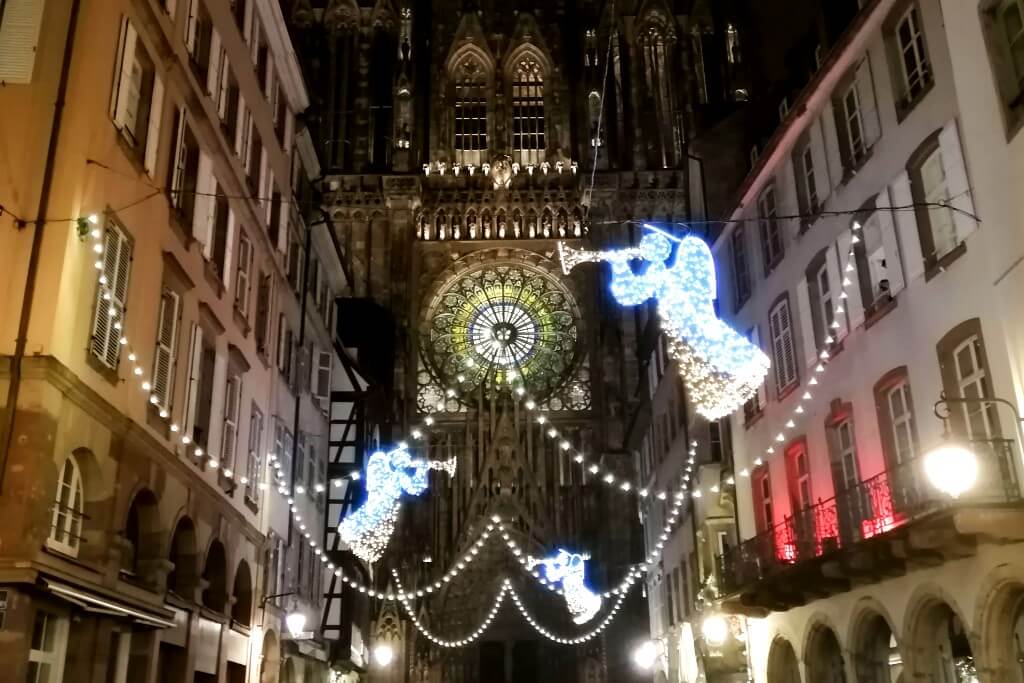
Christmas markets itinerary
Following the Christmas Markets route is a no-brainer itinerary for backpacking Europe in December.
The weather might be cold and gloomy, but the warm holiday atmosphere, the scent of mulled wine in the air, and the sound of Christmas carols prevail.
- Check out my in-depth backpacking Christmas Markets itinerary for the best Christmas Markets to add to your itinerary!
Backpacking along the Mediterranean coast
Once the holiday season is over, we still have January and February. That is the best time to get some sun along the Mediterranean coast!
This European winter sun route will take you through Mediterranean countries like Portugal, Spain, the South of France, and Italy.
These countries might be out of the budget in summer, but they are perfectly affordable in winter. Also, the weather is usually sunny and reminiscent of early autumn and spring.
Backpacking Big Cities route
Finally, backpacking the major European cities route combines the holiday atmosphere, sunny towns, and lively capital.
The best part about backpacking big cities and capitals is that they are always full of life. Cities like Paris, London, and Berlin are equally as vibrant any time of year. There is always something going on!


Final thoughts: Backpacking Europe in the Winter guide
And there you have it! An honest list of advantages and disadvantages of backpacking through Europe in winter from somebody who’s done it.
Winter in Europe can be as fun as backpacking Europe in summer if you know where to go and when.
Sure, it is cold and days are short, but if you’re on a budget and want to enjoy popular tourist attractions without crowds, it’s a great time to visit!
How you do feel about winter in Europe? Let me know in the comments!



